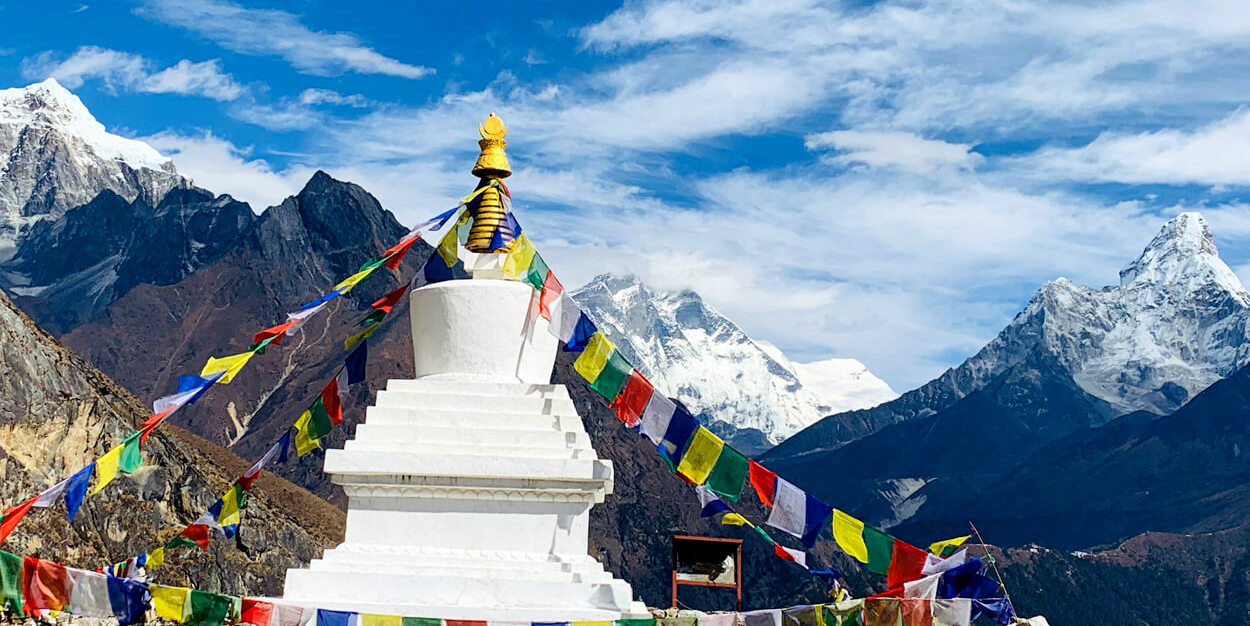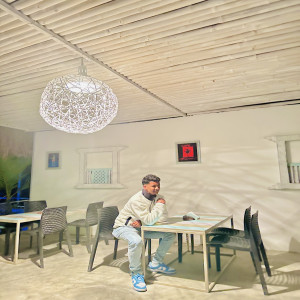Rara Lake
Rara Lake, the largest lake in Nepal, is a truly mesmerizing destination tucked away in the remote Mugu District of the Karnali Zone in the far northwestern part of Nepal. Often referred to as the "Queen of Lakes," Rara Lake is renowned for its stunning beauty, with crystal-clear azure waters that reflect the surrounding lush green hills and snow-capped Himalayan peaks.
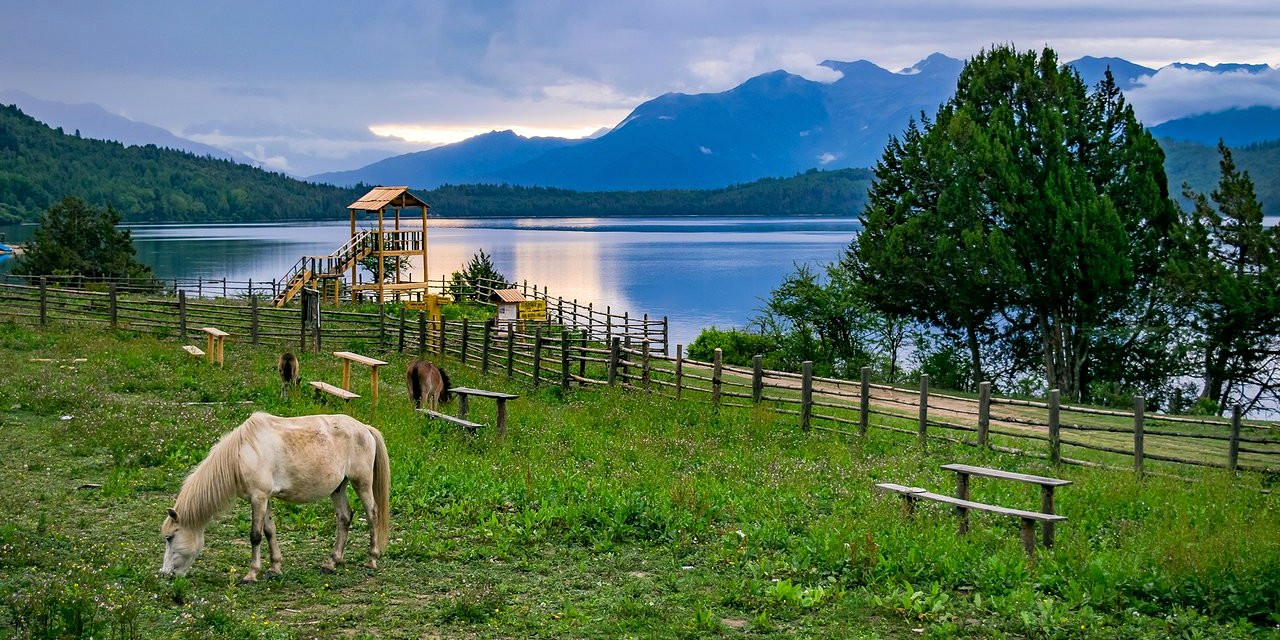
Key Features of Rara Lake
-
Altitude and Size: Rara Lake sits at an altitude of about 2,990 meters (9,810 feet) above sea level and covers an area of approximately 10.8 square kilometers. The lake is about 5 kilometers long and 2 kilometers wide, and it has a maximum depth of 167 meters (548 feet), making it a deep and pristine high-altitude lake.
-
Biodiversity: The area around Rara Lake is protected under the Rara National Park, which spans 106 square kilometers. This park is a haven for biodiversity, home to a variety of flora and fauna, including the Himalayan black bear, musk deer, red panda, and numerous species of birds. The park's forests are comprised mostly of blue pine, black juniper, West Himalayan spruce, oak, Himalayan cypress, and rhododendron.
-
Climate: The climate at Rara Lake is quite pleasant during the summer, with temperatures mildly warm and comfortable for trekking and exploration. However, winters can be harsh, with temperatures plummeting and heavy snowfall. The best times to visit are from April to June and September to October, when the weather is favorable and the views are exceptionally clear.
-
Trekking and Activities: Rara Lake is a popular destination for trekkers seeking solitude away from more commercialized routes. Trekking to Rara Lake involves passing through remote villages and landscapes, offering a unique glimpse into the rural, rustic lifestyle of Northwestern Nepal. Activities at Rara Lake include boating, hiking around the lake, bird watching, and simply relaxing in one of Nepal’s most picturesque settings.
-
Access and Travel: Getting to Rara Lake is part of the adventure. The journey typically involves a flight from Kathmandu to Nepalgunj, followed by another flight to Talcha Airport near the lake. From there, it's a short trek to the lake itself. Alternatively, visitors can embark on a longer trek from Jumla, following ancient routes and passing through scenic landscapes.
Rara Lake remains one of the less-visited jewels in Nepal's crown of natural wonders, primarily due to its remote location and the effort required to reach it. However, those who make the journey are rewarded with breathtaking views and a peaceful atmosphere that can hardly be matched elsewhere. For those looking to escape the typical tourist trails and immerse themselves in nature, Rara Lake is an unmatched destination.
Dolpa Region
The Dolpa Region in Nepal, often referred to as Dolpo, is a high-altitude territory that offers one of the most remote and fascinating travel experiences in the Himalayas. This area, marked by rugged terrain and steeped in Tibetan culture, remains largely untouched by the modern world, making it a haven for adventure seekers and cultural enthusiasts alike.
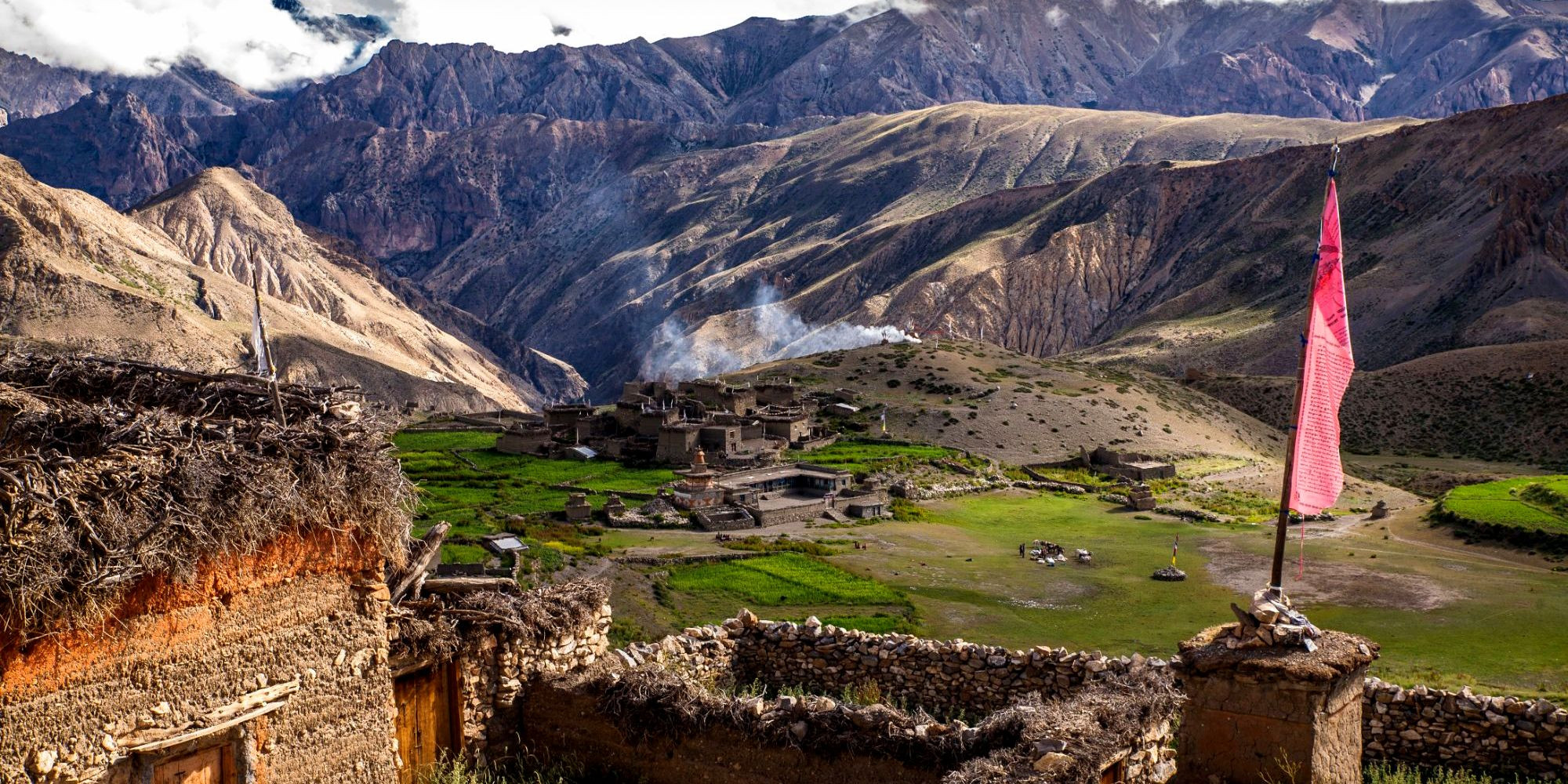
Key Features of the Dolpa Region
-
Geography and Accessibility: Dolpa is located in the mid-western part of Nepal, bordered by the Dhaulagiri range in the south and east. The region is characterized by a rugged landscape that includes high passes, deep valleys, and towering peaks. Its remoteness is accentuated by the lack of roads; access is primarily through footpaths or small airstrips, with the most common entry points being from Juphal and Jumla.
-
Shey Phoksundo National Park: One of the major highlights of Dolpa is the Shey Phoksundo National Park, which features the spectacular Phoksundo Lake, known for its deep blue and emerald colors. This park is Nepal’s largest and contains some of the country’s most stunning scenery. The area is also rich in biodiversity, housing various species such as the snow leopard, blue sheep, and the Himalayan tahr.
-
Tibetan Culture: The culture in Dolpa has remained largely influenced by Tibetan Buddhism, which is evident in the daily lives of its people, their festivals, and the numerous ancient monasteries that dot the landscape. The famed Crystal Mountain and the 800-year-old Shey Monastery are notable cultural landmarks that draw both pilgrims and curious visitors.
-
The "Inner Dolpo" Trek: One of the more challenging and rewarding trekking experiences in Nepal is the trek to Inner Dolpo, which includes crossing high passes like Nangdalo La, Sela La, and Jeng La. This trek allows adventurers to explore the unspoiled beauty and the unique culture of the region. It's a journey back in time, through landscapes and villages that have seen little change over centuries.
-
Unique Flora and Fauna: The environment in Dolpa is unique due to its high altitude and isolation. This has resulted in a distinct flora and fauna, including medicinal plants that are harvested by locals. The barren landscapes above the tree line contrast sharply with lush pine and juniper forests in lower altitudes.
-
Economy and Lifestyle: The economy in Dolpa is primarily based on agriculture, animal husbandry, and trade, especially salt trade across the Himalayas. The harsh climate and difficult terrain have shaped a lifestyle that is simple yet resilient, reflected in the robust and hospitable nature of the Dolpa people.
The Dolpa Region remains a destination where one can truly disconnect from the modern world and immerse oneself in the vastness of nature and the depth of ancient traditions. It's a journey not just through physical landscapes but also through the spiritual heritage of the Himalayan frontier.
Kanchenjunga Base Camp
The Kanchenjunga Base Camp trek is an extraordinary journey to the base of the world’s third highest mountain, Kanchenjunga, which stands at a majestic 8,586 meters (28,169 feet). This trek is less frequented than other Himalayan treks, such as those to Everest or Annapurna, offering a more secluded and raw adventure for those who venture into its paths. The trek not only provides stunning views of the massive Kanchenjunga massif but also introduces trekkers to the rich cultural heritage of eastern Nepal.
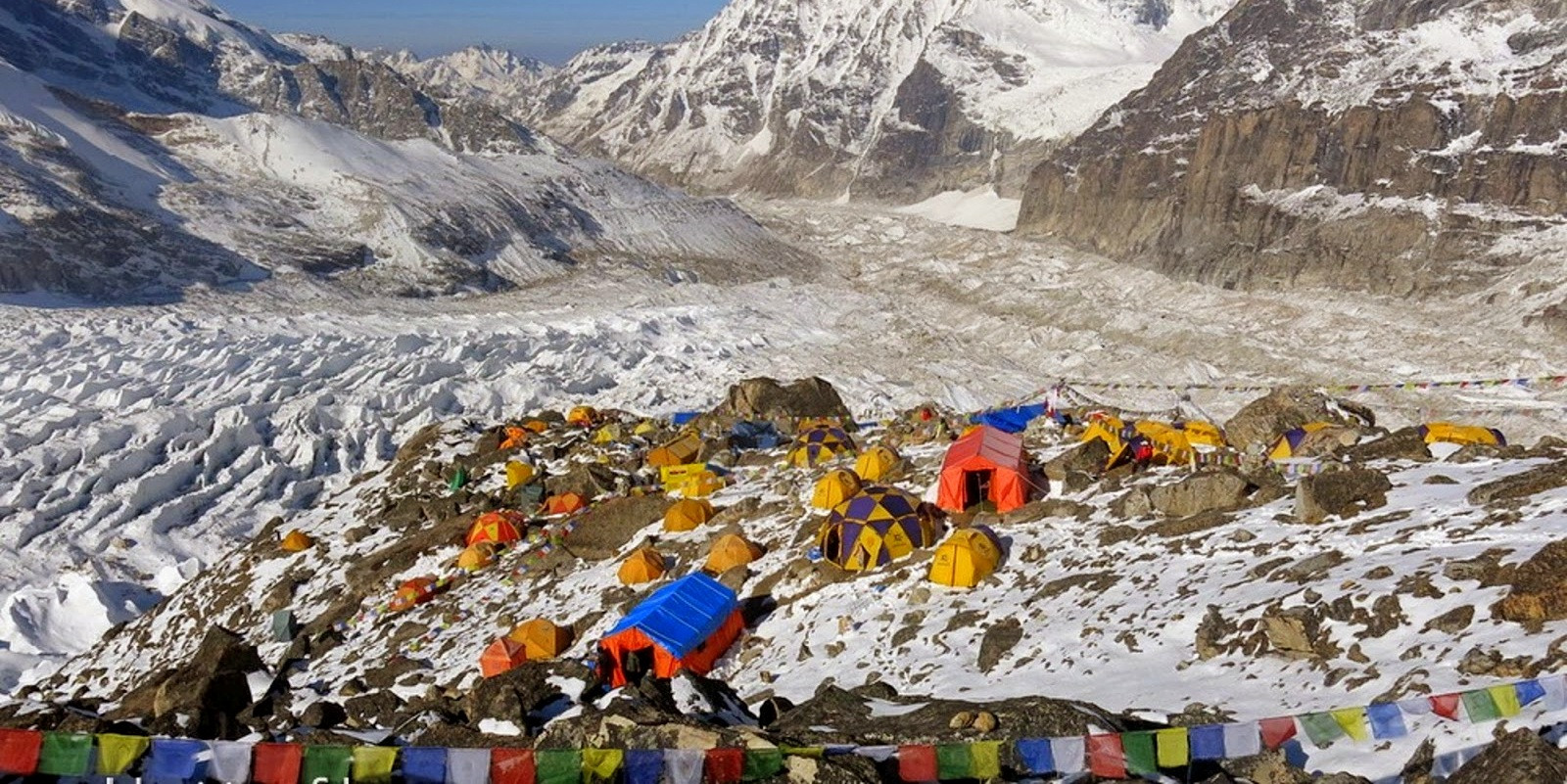
Key Features of the Kanchenjunga Base Camp Trek
-
Scenic Diversity: The trek traverses a variety of landscapes, from lush, tropical jungles at lower altitudes, through rhododendron forests and alpine meadows, to the stark, rocky landscapes above the snow line. This dramatic change in scenery provides a visually stunning backdrop to the challenging trek.
-
Cultural Experience: The trek routes pass through diverse ethnic communities, including Limbu, Rai, Sherpa, and Tibetan villages. This cultural exposure is complemented by visits to monasteries and temples along the way, offering a glimpse into the spiritual life of the inhabitants.
-
Flora and Fauna: The Kanchenjunga Conservation Area, which the trek partly traverses, is a biodiversity hotspot. It is home to a wide range of wildlife, including the endangered snow leopard, red panda, and Himalayan black bear. The area is also renowned for its diverse bird species and unique plant life.
-
Challenging Routes: The trek is known for its challenging routes, which include high passes and rugged trails. Trekkers need to cross passes like Sele La, Mirgin La, and Sinion La, which offer exhilarating and panoramic views of the Himalayas. The physical challenge is significant, but the rewards are equally gratifying.
-
Remote and Serene: Unlike more popular treks in Nepal, the Kanchenjunga trek offers a sense of solitude and remoteness rarely found in other destinations. The trails are less crowded, allowing for a more personal and introspective journey.
Travel Considerations
-
Permits and Regulations: Due to its proximity to the Indian border, special trekking permits are required for Kanchenjunga. Trekkers must also travel in groups of at least two and hire a local guide. These regulations help ensure the safety of visitors and the protection of the natural environment.
-
Best Time to Visit: The best times to embark on the Kanchenjunga Base Camp trek are during the spring (March to May) and autumn (September to November) seasons. During these periods, the weather is generally clear, and the views of the Himalayas are spectacular.
-
Preparation: Given the demanding nature of the trek, adequate physical preparation is essential. It is also important to be well-equipped for high-altitude trekking and to acclimatize properly to prevent altitude sickne
The Kanchenjunga Base Camp trek is a profound experience that combines physical challenges with cultural enrichment and natural beauty. It’s an adventure that offers an intimate encounter with the Himalayas, providing trekkers with memories that last a lifetime.
Tsum Valley
Tsum Valley, often referred to as the "Hidden Valley," is a serene and secluded region nestled in the northern part of Gorkha, Nepal. This valley is relatively unexplored compared to more mainstream Nepalese trekking destinations and provides a unique blend of rich cultural heritage and stunning natural beauty. Known for its strong, vibrant Tibetan culture and its sacred significance to Buddhist pilgrims, Tsum Valley is a place of peace and spiritual allure.
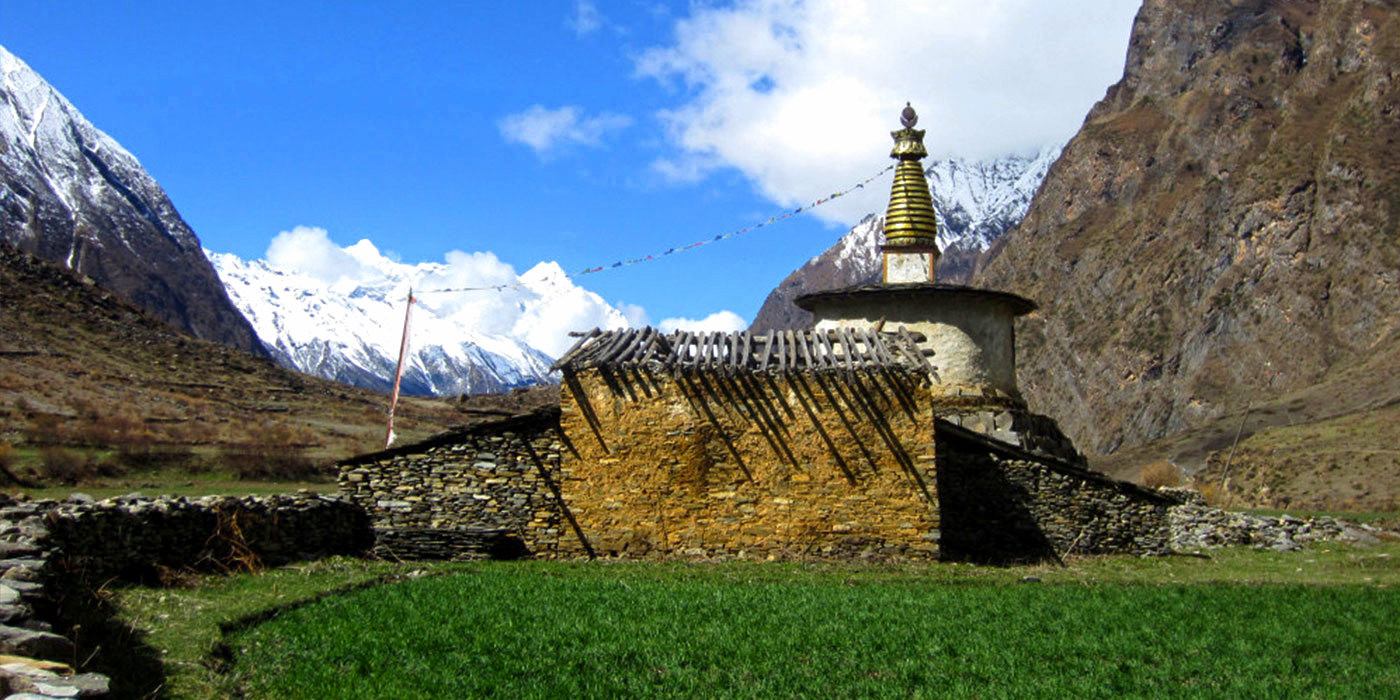
Key Features of Tsum Valley
-
Rich Cultural Heritage: Tsum Valley is renowned for its profound religious significance and numerous ancient monasteries like Rachen Gompa and Mu Gompa, which date back several centuries. The region is steeped in Tibetan Buddhism, and many local festivals such as Dhacyhang, Saka Dawa, and Lhosar provide insight into the spiritual and communal life of the Tsum people.
-
Stunning Scenery: Surrounded by the Buddha Himal and Himal Chuli to the west, Ganesh Himal to the south, and Sringi Himal to the north, the valley offers dramatic landscapes with a picturesque backdrop of towering peaks. The valley itself is lush and fertile, making it a beautiful contrast to the rugged mountains around it.
-
Secluded and Serene: Tsum Valley remains one of the less trodden paths in the Nepalese Himalayas. Its isolation helps preserve its pristine nature and traditional culture. For trekkers looking to escape the more crowded trails and enjoy tranquility, Tsum Valley is an ideal destination.
-
Biodiversity: The region is a habitat for diverse wildlife. It's not uncommon to spot the Himalayan Thar, Goral, Serow, or even the elusive snow leopard. The forests are dense with pine and rhododendron trees, and during the spring, the blooming flowers add a splash of color to the valley.
-
Spiritual Relevance: Tsum Valley is considered a beyul, one of the hidden valleys that Padmasambhava blessed as refuges for those seeking spiritual solace in times of trouble. This aspect makes it a significant pilgrimage site for Buddhists.
Travel Considerations
-
Access and Permits: Reaching Tsum Valley involves a trek that typically starts from Arughat or Soti Khola, following part of the Manaslu Circuit before diverging into the valley. Due to its sacred and sensitive nature, trekkers need a special permit to enter Tsum Valley.
-
Best Time to Visit: The ideal times to visit Tsum Valley are during the spring (March to May) and autumn (September to November) seasons when the weather is clear and conducive for trekking.
-
Preparation and Acclimatization: While not as high as other trekking regions, the altitude in Tsum Valley can still reach up to 3,700 meters (about 12,139 feet), so proper acclimatization is necessary. Due to its remoteness, trekkers should also be prepared for basic accommodations and limited facilities.
Tsum Valley offers a unique opportunity to experience both the natural beauty and the preserved slice of Tibetan culture that is rarely found elsewhere. It’s a journey that not only challenges the body but also enriches the spirit, making it a profound and fulfilling adventure for those who undertake it.
Limpiyadhura
Limpiyadhura, located in the far western region of Nepal near the border with India, is a relatively unexplored and newly accessible area that has recently garnered attention due to its pristine landscapes and strategic significance. It is part of the territorial tri-junction of Nepal, India, and China (Tibet), which has made it a focal point in recent geopolitical discussions. For trekkers and those interested in the political landscape of the region, Limpiyadhura offers a unique blend of natural beauty and contemporary historical relevance.
Key Features of Limpiyadhura
-
Strategic Location: Limpiyadhura is notable for its geographical and strategic importance. It sits near the origin of the river Kali, which is a significant marker in the territorial delineation between Nepal and India. This area has been at the heart of recent border disputes, which adds a layer of intrigue for those interested in geopolitical issues.
-
Untouched Natural Beauty: The region boasts untouched wilderness characterized by rugged terrain and scenic vistas. The landscape is predominantly alpine, with lush green meadows during the summer months, making it an ideal spot for nature enthusiasts and photographers.
-
Historical and Cultural Significance: While primarily known for its geographical and political significance, the area around Limpiyadhura is also rich in cultural heritage, with influences from various ethnic groups that have lived in these borderlands. The blend of cultures and traditions adds a rich layer of diversity to the trekking experience.
-
Trekking and Exploration: Limpiyadhura is not typically featured on standard trekking routes, which means it offers a truly off-the-beaten-path experience for trekkers looking to explore untouched territories. The trails are less developed and offer raw and challenging trekking opportunities for those looking to push their limits.
Travel Considerations
-
Accessibility: Accessing Limpiyadhura can be challenging due to its remote location and the lack of developed infrastructure. The journey often requires a combination of long drives and several days of trekking through rugged terrain.
-
Permits and Regulations: Given its sensitive location near international borders, obtaining the necessary permits can be more complex than for other trekking destinations in Nepal. Travelers need to ensure all paperwork is in order, potentially including special permissions due to the area's strategic importance.
-
Best Time to Visit: The best time to visit Limpiyadhura is during the pre-monsoon months of April to June and post-monsoon months from September to November. During these times, the weather is generally clear, providing better conditions for trekking and clearer views of the landscape.
Limpiyadhura represents a unique destination within Nepal for those interested in the confluence of natural beauty and geopolitical intrigue. Its remote and relatively uncharted terrain offers a challenging yet rewarding experience for intrepid travelers seeking to delve into areas that are rarely visited and rich in both history and culture.
Upper Mustang
Upper Mustang, often referred to as the Last Forbidden Kingdom, is a remote and mystical region in Nepal that offers a starkly beautiful landscape and a glimpse into a way of life that has remained largely unchanged for centuries. This area was restricted to outsiders until 1992, preserving its mystique and cultural integrity. Situated in the rain shadow of the Himalayas, Upper Mustang is characterized by its rugged desert-like terrain, deep gorges, and rock shelves, painted with a vibrant tapestry of earthy reds, yellows, and browns.
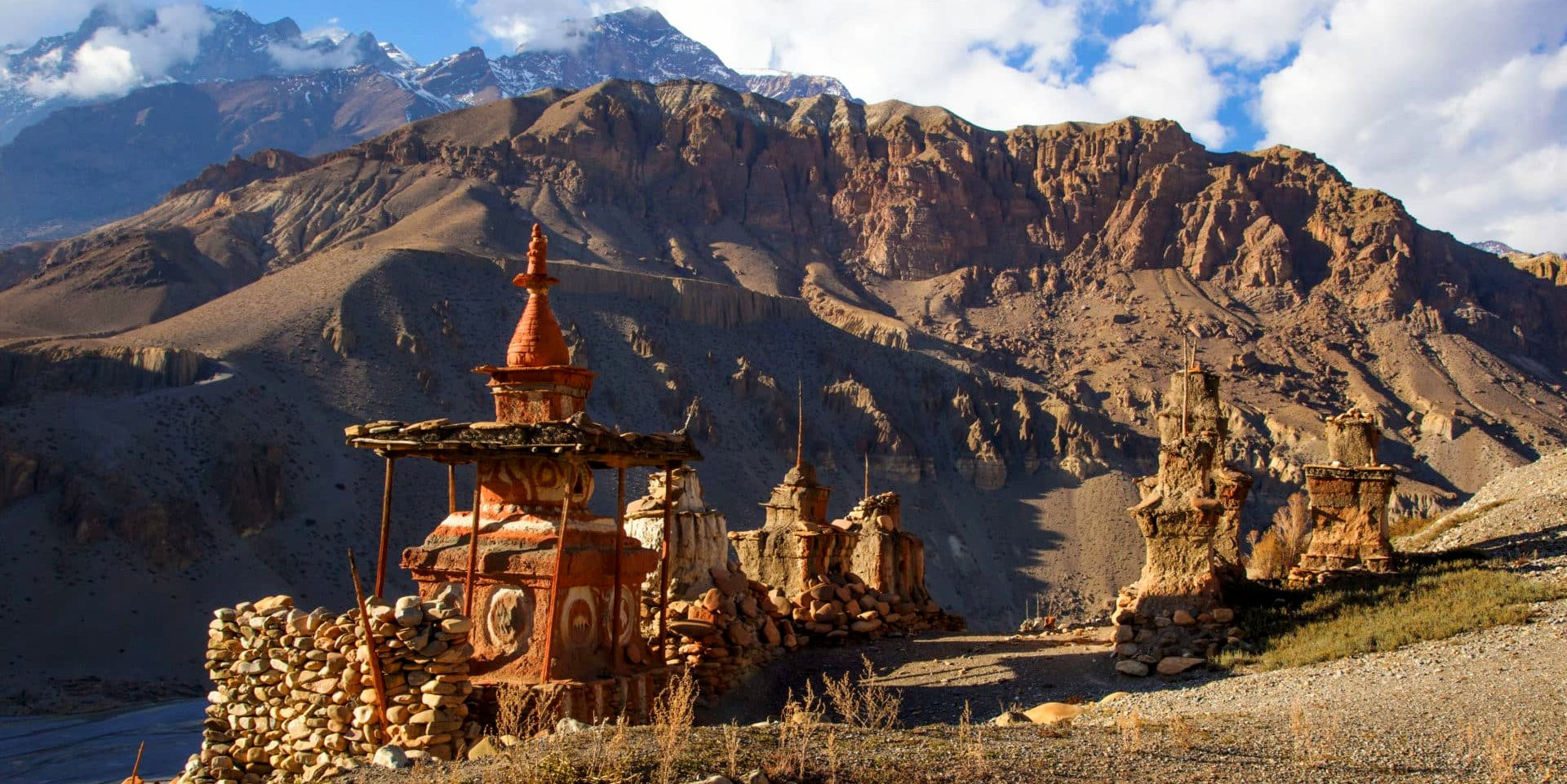
Key Features of Upper Mustang
-
Unique Landscape: Unlike the lush greenery commonly associated with most of Nepal, Upper Mustang boasts a barren, moon-like landscape. This high-altitude desert is surrounded by rocks in alluring shades of red and brown and is dotted with ancient settlements and monasteries that blend seamlessly into the terrain.
-
Rich Cultural Heritage: Upper Mustang is a treasure trove of ancient Tibetan Buddhist art and culture. The region's capital, Lo Manthang, is surrounded by huge town walls and contains a royal palace as well as several major gompas (monasteries). The art and architecture here are influenced heavily by Tibetan culture, reflecting the area’s historical ties with Tibet.
-
Archaeological Wonders: The region is famous for its mysterious sky caves, some of which are among the world’s highest man-made caves. These caves, carved into the vertical cliffside, are believed to be over 2,000 years old and provide archaeological insights into the region’s ancient and medieval history.
-
Festivals and Traditions: The local festivals, such as the Tiji Festival in Lo Manthang, are vibrant and colorful, reflecting the rich spiritual life of the Mustangi people. These festivals are an integral part of the local culture and offer visitors a profound glimpse into the region's traditions and beliefs.
-
Trekking Experience: Trekking in Upper Mustang is a unique experience, different from more verdant regions of Nepal. The arid conditions, coupled with the high altitude, present a challenging adventure for trekkers. The trail offers panoramic views of majestic mountains and deep valleys, and the lack of vegetation exposes a fascinating geological diversity.
Travel Considerations
-
Restricted Area Permit: Upper Mustang is classified as a restricted area, and trekkers need a special permit to enter. This helps control the impact and preserves the region's ecological and cultural heritage. The permits are not cheap, but they are part of what makes a visit to this secluded kingdom so exclusive.
-
Accessibility: The usual trek to Upper Mustang begins from Jomsom, which is accessible by flight from Pokhara. The trek typically follows the ancient salt caravan route through high peaks, deep canyons, and stark ridges.
-
Best Time to Visit: The best times to visit Upper Mustang are during the spring (May and June) and fall (late September to November), when the weather is most favorable. These months avoid the monsoon season and provide clear days with the best visibility.
Upper Mustang remains one of the few places on earth where one can see the untouched Tibetan culture and explore an ancient landscape that is both harsh and beautiful. For those drawn to remote destinations and cultural preservation, Upper Mustang offers an unmatched journey back in time.
Barpak Village
Barpak Village, located in the Gorkha district of Nepal, gained global attention as the epicenter of the devastating 2015 earthquake. Despite this tragedy, the village has demonstrated remarkable resilience and has largely rebuilt itself, emerging as a symbol of strength and recovery. Barpak, predominantly inhabited by the Gurung people, is also renowned for its unique round stone houses and traditional lifestyle, which attract travelers seeking authentic cultural experiences.
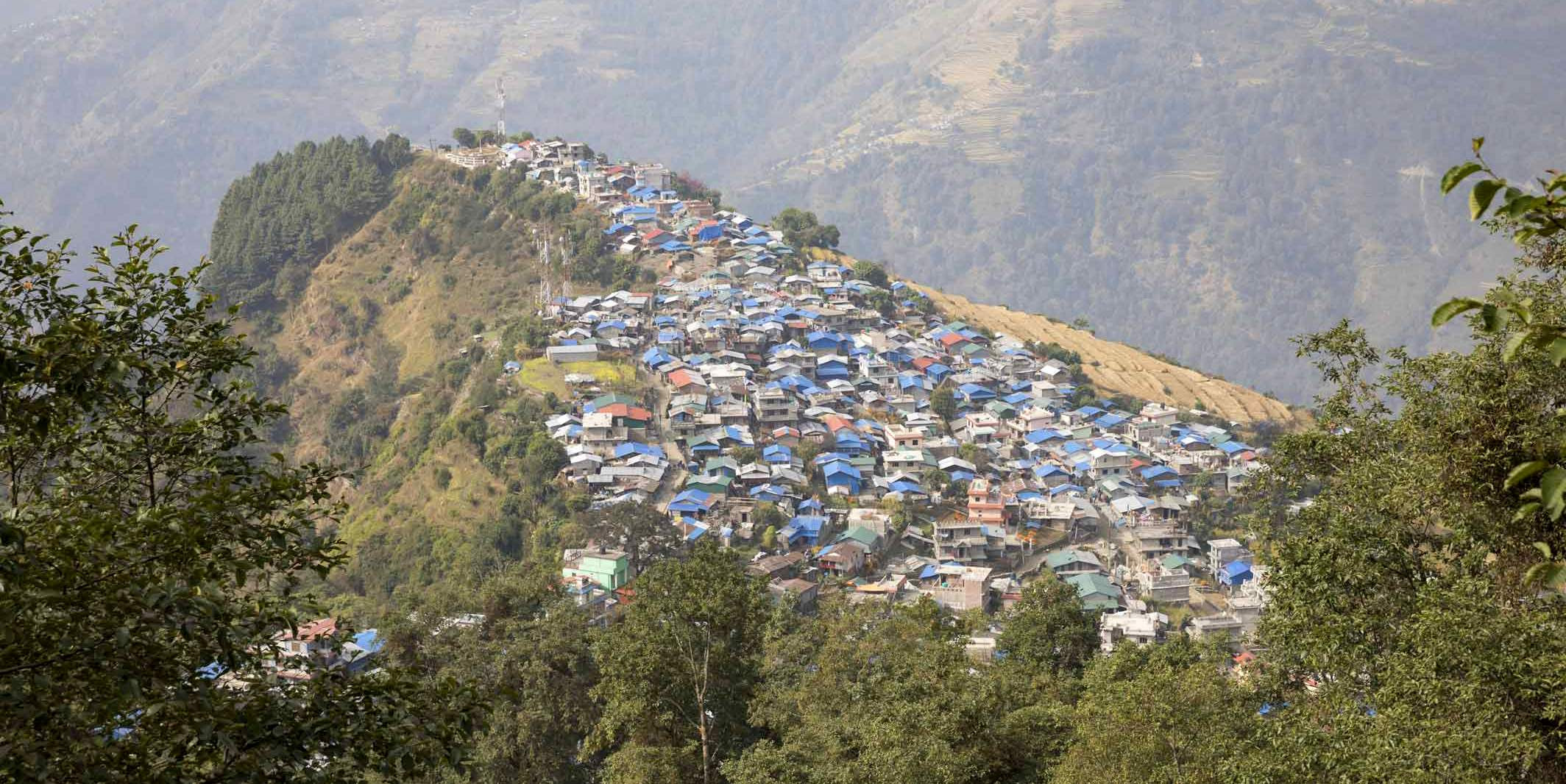
Key Features of Barpak Village
-
Cultural Richness: Barpak is well-known for its rich cultural heritage. The Gurung people, known for their contributions to the Gurkha regiments, celebrate vibrant festivals such as Dashain, Tihar, and Buddha Jayanti. Their traditional dances, music, and attire offer a deep dive into the local culture that is both educational and entertaining.
-
Scenic Beauty: Nestled in the lap of the Himalayas, Barpak offers stunning panoramic views of surrounding peaks such as Buddha Himal and Sringi Himal. The village's setting allows for numerous scenic hikes and nature walks, which showcase the breathtaking natural environment of the region.
-
Traditional Architecture: One of the distinctive features of Barpak is its traditional round stone houses, which are designed to be functional and earthquake-resistant. These houses not only reflect the architectural ingenuity of the Gurung people but also contribute to the aesthetic charm of the village.
-
Home of Gorkha Soldiers: Barpak has a proud history of contributing soldiers to the Gurkha regiments of the British and Indian armies. This legacy adds to the village's character and provides visitors with stories of valor and sacrifice that are integral to the community's identity.
Travel Considerations
-
Access and Transportation: Barpak is accessible via road from Kathmandu, although the journey can be lengthy and the roads challenging, especially in the rainy season. The rugged terrain adds to the adventure of reaching this remote village.
-
Accommodation and Facilities: Since the earthquake, local infrastructure has been improved, and several homestays and guesthouses are available for visitors. These facilities offer a chance to stay with local families and experience Gurung hospitality firsthand.
-
Best Time to Visit: The best times to visit Barpak are during the spring (March to May) and autumn (September to November) when the weather is clear and mild, making it ideal for trekking and outdoor activities.
Barpak Village is not just a destination; it's a profound experience that connects visitors with the resilience and rich traditions of the Gurung people. It offers a unique opportunity to learn about rural Nepalese life and the community's inspiring comeback from adversity, making it a truly enriching travel destination.
Note
For explorers searching for seclusion, unspoiled nature, and genuine cultural interactions, trekking through Nepal's uncharted sites provides an exceptional and gratifying experience. Courses in places like Rara Lake, Dolpa, Tsum Valley, and Kanchenjunga Base Camp will carry you deep into far-off Nepal, where ancient customs, pristine scenery, and friendly local hospitality abound, unlike the crowded paths of Everest or Annapurna. For people searching to cut ties with the modern world and fully engage themselves in the wilds of Nepal, these out-of-the-way Nepal locations are ideal. Though the treks are more arduous and need more planning, the payoff is unparalleled: an unforgettable trip into Nepal's interior.
From the culturally rich Barpak village to the isolated highlands of Limpiyadhura, Nepal's unexplored sites present a cornucopia of one-of-a-kind experiences. Ideally for those desiring excitement, solitude, and a stronger link with local customs and nature, these more remote destinations offer themselves. Places such as Rara Lake, Dolpa Region, and Upper Mustang offer close contact with Nepal's magnificent scenery and rich cultural heritage beyond the busy trails of Everest and Annapurna. By investigating these diamonds in the rough, travelers engage respectfully with indigenous people and make sure their trip is as inspiring as it is exciting.
FAQs for Unexplored Destinations in Nepal
Q: What are some unexplored destinations in Nepal for adventure travelers?
A: Rara Lake, Dolpa Region, Kanchenjunga Base Camp, Tsum Valley, Limpiyadhura, Upper Mustang, and Barpak Village are all excellent choices for those looking to explore off-the-beaten-path areas in Nepal.
Q: Do I need special permits to visit these unexplored areas?
A: Yes, many remote areas in Nepal require special permits to visit, especially places like Upper Mustang, Tsum Valley, and certain parts of the Dolpa Region. It's essential to arrange these permits in advance, often through a registered trekking agency.
Q: What is the best time to visit these unexplored destinations in Nepal?
A: The best time to visit most unexplored destinations in Nepal is during the spring (March to May) and autumn (September to November) seasons when the weather is most favorable for trekking.
Q: Are these destinations suitable for solo travelers?
A: While solo travel is possible in Nepal, some restricted areas require you to be part of a group and to be accompanied by a registered guide. Check specific regulations for each destination before planning your trip.
Q: What should I pack for a trek to these remote areas?
A: Essential items include high-quality hiking boots, layered clothing suitable for cold temperatures, a good quality sleeping bag, a first aid kit, water purification tablets, and sufficient cash, as ATMs may not be available.
Q: How can I ensure my safety while trekking in remote areas of Nepal?
A: Always hire a knowledgeable local guide, inform someone of your travel itinerary, stay updated on local weather conditions, and adhere to all safety advice regarding altitude sickness and other potential hazards.
Q: What cultural norms should I be aware of when visiting rural and remote Nepali villages?
A: Respect local customs and dress modestly. Always ask for permission before taking photographs of people or religious sites. Participate in local traditions only when invited, and contribute to the local economy by purchasing local goods and using local services.
Q: How do these unexplored areas contribute to sustainable tourism?
A: Visiting less popular destinations helps distribute tourist income more evenly and can alleviate the environmental and social stress on more frequented sites. Engaging with community-based tourism initiatives also supports local livelihoods directly.
Q: Can I find accommodation easily in these unexplored destinations?
A: Accommodation options vary. In some areas, like Upper Mustang and Tsum Valley, guesthouses and homestays are available. In more remote regions like Limpiyadhura, camping might be the only option. Always plan your accommodation, particularly during peak trekking seasons.
Q: What unique wildlife might I see in these areas?
A: Depending on the region, you might spot wildlife such as snow leopards, Himalayan tahrs, red pandas, and various species of birds. Always keep a safe and respectful distance from wildlife.
For the Tibet Tour, please click here.
If you are looking for different kinds of Tibet Packages, feel free to contact us.
